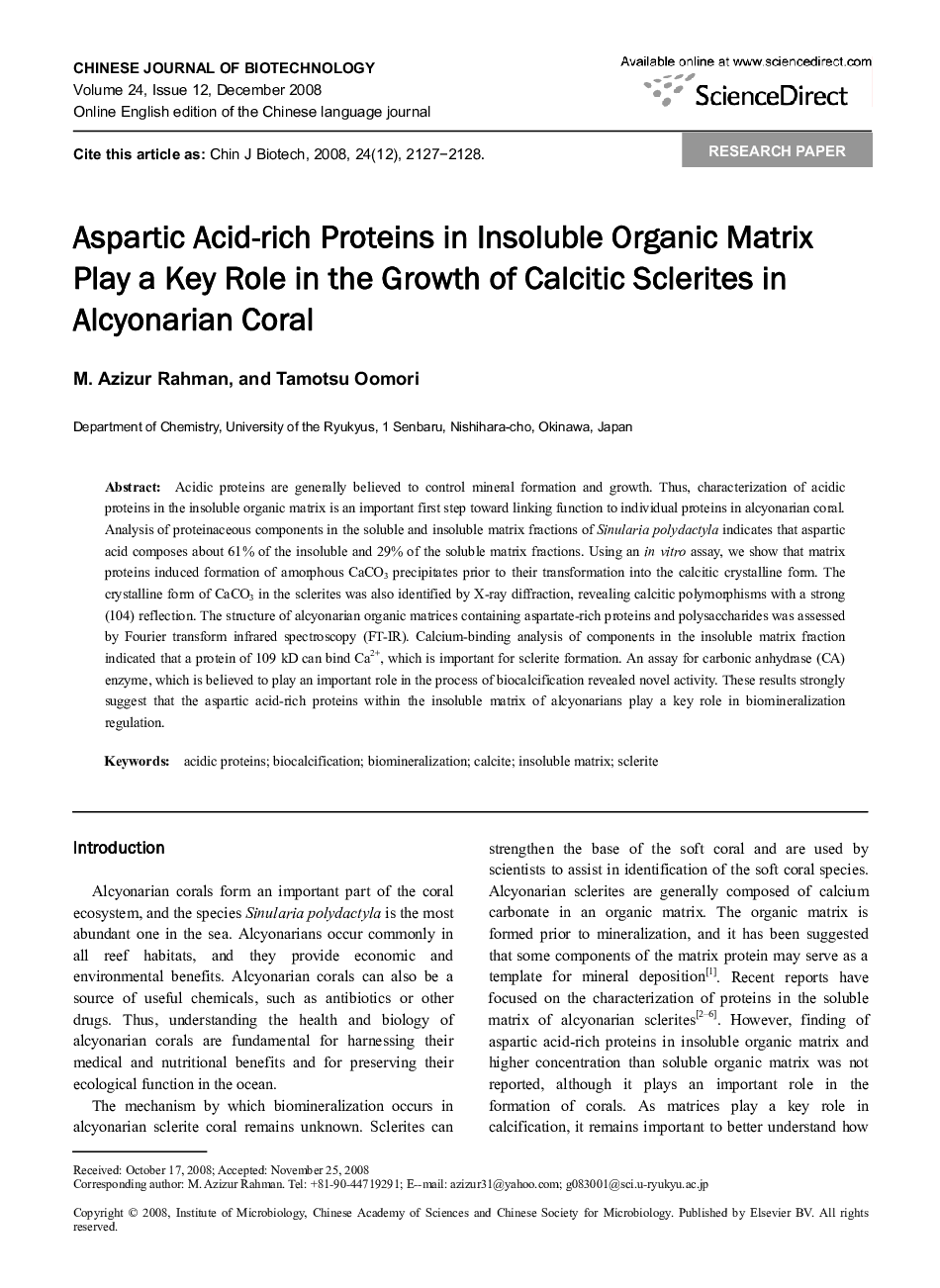| Article ID | Journal | Published Year | Pages | File Type |
|---|---|---|---|---|
| 2078811 | Chinese Journal of Biotechnology | 2008 | 5 Pages |
Abstract
Acidic proteins are generally believed to control mineral formation and growth. Thus, characterization of acidic proteins in the insoluble organic matrix is an important first step toward linking function to individual proteins in alcyonarian coral. Analysis of proteinaceous components in the soluble and insoluble matrix fractions of Sinularia polydactyla indicates that aspartic acid composes about 61% of the insoluble and 29% of the soluble matrix fractions. Using an in vitro assay, we show that matrix proteins induced formation of amorphous CaCO3 precipitates prior to their transformation into the calcitic crystalline form. The crystalline form of CaCO3 in the sclerites was also identified by X-ray diffraction, revealing calcitic polymorphisms with a strong (104) reflection. The structure of alcyonarian organic matrices containing aspartate-rich proteins and polysaccharides was assessed by Fourier transform infrared spectroscopy (FT-IR). Calcium-binding analysis of components in the insoluble matrix fraction indicated that a protein of 109 kD can bind Ca2+, which is important for sclerite formation. An assay for carbonic anhydrase (CA) enzyme, which is believed to play an important role in the process of biocalcification revealed novel activity. These results strongly suggest that the aspartic acid-rich proteins within the insoluble matrix of alcyonarians play a key role in biomineralization regulation.
Related Topics
Life Sciences
Biochemistry, Genetics and Molecular Biology
Biotechnology
Authors
M. Azizur Rahman, Tamotsu Oomori,
